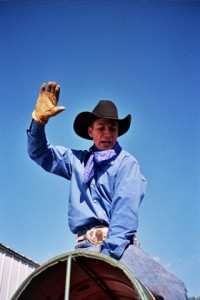
John E. Hudgens is the foremost historian of one of the strangest sub-genres of modern cinema: the fan film. He began his career in entertainment making music videos for Babylon 5, but found greater success when he created three of the most successful Star Wars fan films ever made: “Crazy Watto” (which won the Lucasfilm Official Fan Film Awards in 2000 and was shown at Cannes), “Darth Vader’s Psychic Hotline,” and “Jedi Hunter” (which were runner-up and winner of the Luscafilm fan audience awards in 2002 and 2003 respectively.) As a documentarian, he directed Backyard Blockbusters, a history of fan films that played at the Other Worlds Austin Film Festival. I talked to him just before Star Wars Day, May the Fourth, in 2016, about the history of fan films, and what the recent fight over who owns the rights to Star Trek mean for the genre (parts of this interview previously appeared at www.austinchronicle.com.)
Richard Whittaker: As a maker of fan films, hat’s the appeal for you of playing on someone else’s sandbox?
John E. Hudgens: The great thing about fan films is that there’s a short hand. You don’t have to explain the set-up of Star wars. If you’re going to tell your own original story, you have to set up everything, but if you don’t need to explain Darth Vader, you don’t have to explain lightsabers, it’s all already there. It’s all already there, people get it, and that’s one less thing you have to do.
Of course, I say that talking more about parodies, which is more what I’ve done. I’ve not done anything like Star Trek: New Voyages. But a lot of people want to play in that universe, and the only they can get certain things, or see certain things done, is to do it themselves. So “Jedi Hunter” was such a great idea, but the only way to see it was to go make it. Luckily, we were able to pull that off.
Continue reading Interview: John E. Hudgens on Star Wars Fan Films








